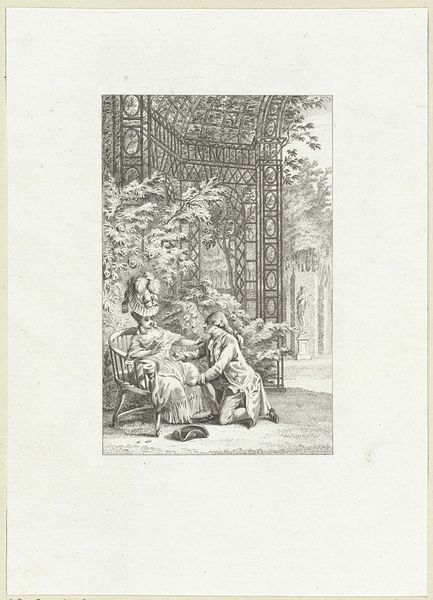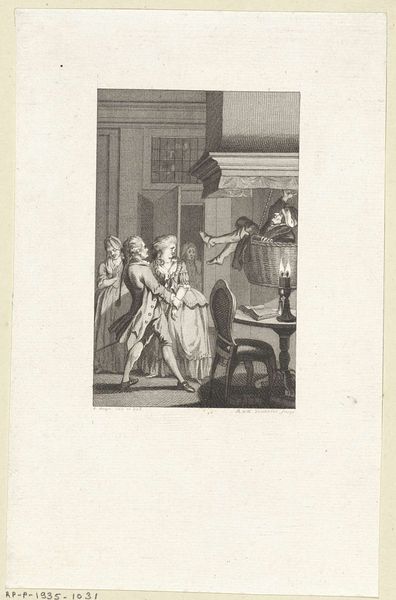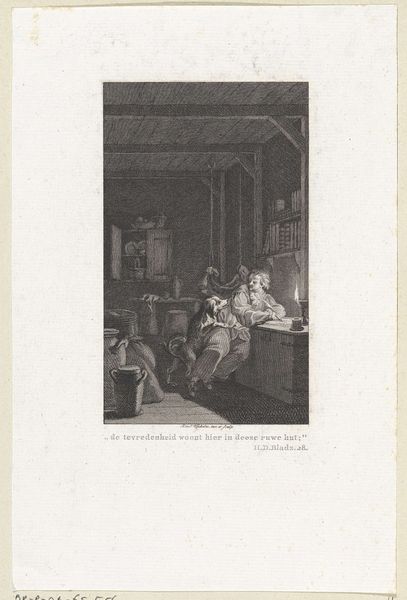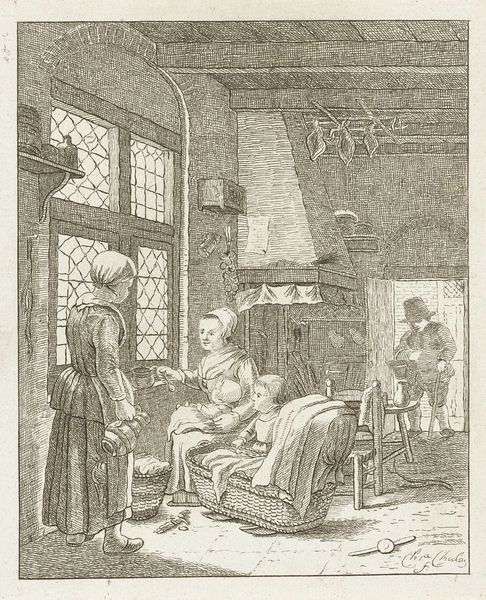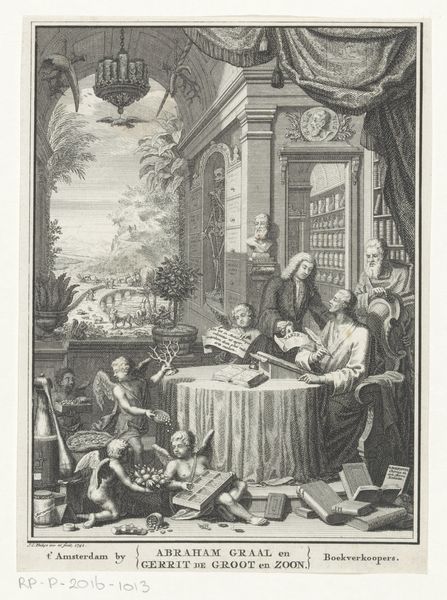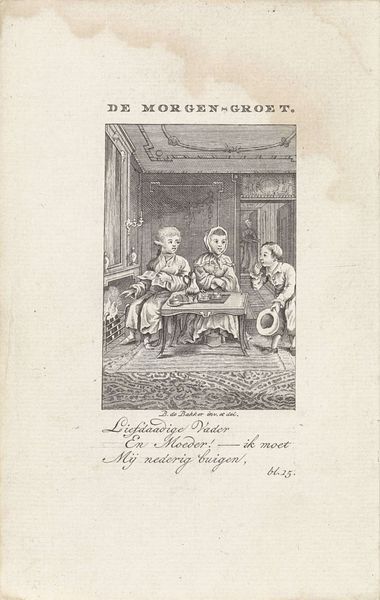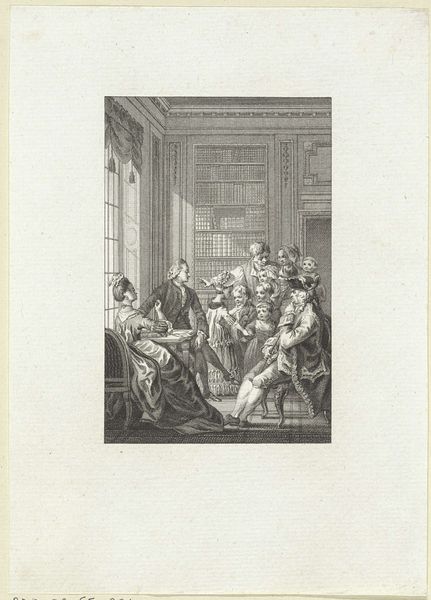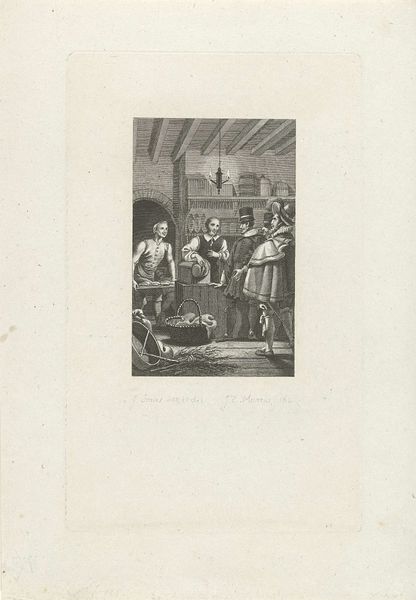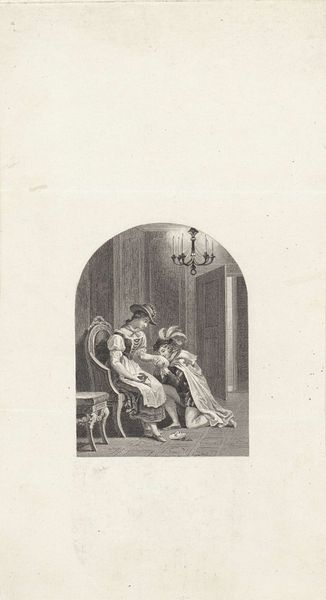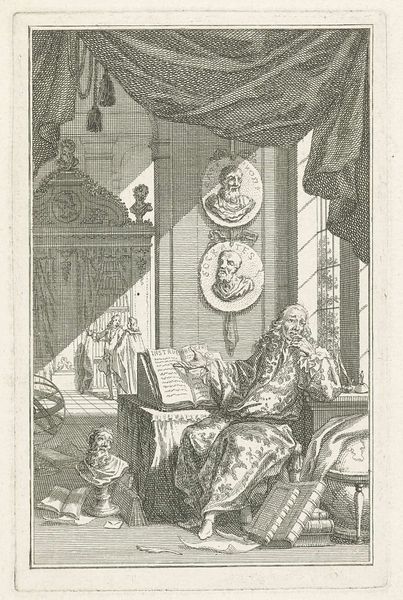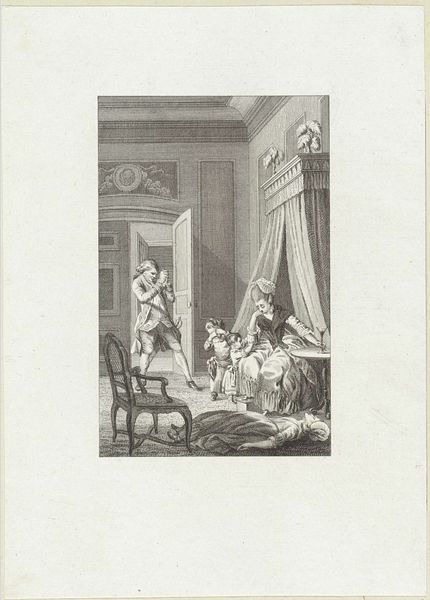
print, engraving
#
allegory
#
baroque
# print
#
old engraving style
#
landscape
#
genre-painting
#
history-painting
#
engraving
Dimensions: height 144 mm, width 86 mm
Copyright: Rijks Museum: Open Domain
Editor: This is "Voorzichtigheid wijst op wapenschild met de zondeval", an engraving by Jan Caspar Philips from 1758. It’s incredibly detailed, depicting angels in a garden setting. It seems like quite a formal, almost staged scene, yet I can't quite put my finger on the overarching meaning. What historical perspectives might help illuminate this piece? Curator: Well, consider the Dutch Republic of the 18th century. This print emerges from a culture steeped in moral allegory, where art frequently served didactic purposes. Philips, working within the Baroque tradition, utilizes complex symbolism. Note the angel presenting a shield displaying the Fall of Man – Adam and Eve succumbing to temptation. This wasn't simply a biblical scene; it was a potent symbol of human fallibility and the need for prudence, voorzichtigheid in Dutch. How might this resonate with the societal anxieties of the time? Editor: So, it's less about the literal depiction and more about conveying a broader message of caution? The shield seems to act almost like a warning... like 'here is what to look out for'? Curator: Precisely. The 'history painting' embedded in the shield becomes a tool. Furthermore, think about the genre-painting elements, like the putti playing in the garden. They introduce a dynamic of innocence versus experience, contrasting with the weight of the original sin portrayed. The location being in Rijksmuseum amplifies it’s reach to people from all different social statuses; What are your thoughts on the potential role of wealthy merchants or governmental structures in circulating/owning such a moral lesson at this point in time? Editor: It suggests that this artwork has a complex visual vocabulary deeply entwined with moral instruction, particularly aimed at a wider audience perhaps through dissemination in the print medium? This makes understanding the art's public role so fascinating, since engravings can democratize art... it has really given me a new perspective. Curator: Indeed. The intersection of art, morality, and public life is a critical lens through which to understand such works. Thank you!
Comments
No comments
Be the first to comment and join the conversation on the ultimate creative platform.


